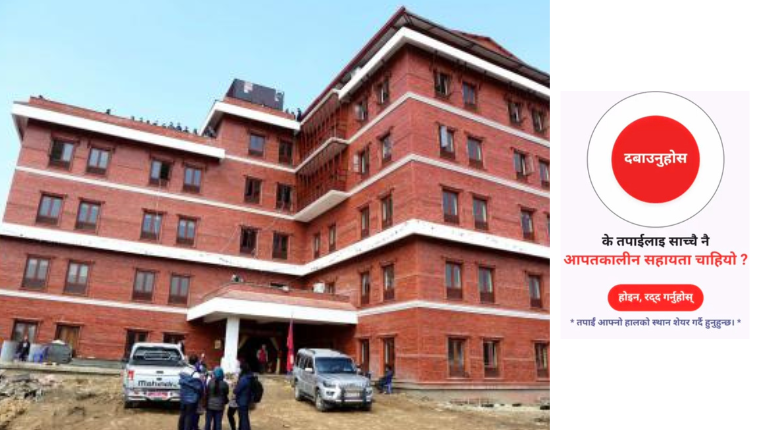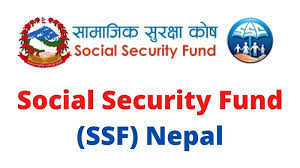Chandragiri Municipality Introduces Panic Button for Immediate Disaster Assistance
In a bold step toward enhancing disaster preparedness and response, Chandragiri Municipality in Kathmandu has launched a panic button system that allows residents to seek emergency rescue help directly via their mobile phones. techpana.com
This innovation marks an important milestone in making municipal disaster management more accessible, responsive, and citizen-centric.
Why a Panic Button?
Nepal is a country prone to multiple hazards: landslides, flooding, earthquakes, fire, and more. Local governments play a crucial role in disaster risk reduction, relief, and rescue. But in many emergencies, time is of the essence, and delays in communication or mobilization can cost lives.
With a panic button:
- A person who suddenly finds themselves in danger (e.g. landslide, collapse, flood inundation, or structural failure) can immediately alert municipal emergency services.
- It bridges the “last mile” gap ensuring that people in remote or risky zones can summon help without having to travel or find conventional channels.
- It strengthens local accountability: municipal emergency response centers are now directly linked to residents, making performance and accountability more visible.
How the System Works (as known so far)
- The feature is integrated with the Emergency Response Center (ERC) of Chandragiri Municipality.
- Residents can press the panic button on their mobile phones in times of disaster to request immediate assistance.
- Once a request is received, the ERC is expected to mobilize rescue, medical, or logistical support depending on the nature of the emergency.
- The municipality has been praised by officials (e.g. MoFAGA) for adopting innovations in disaster risk mana
Details such as whether this uses an app, SMS, USSD, or a hotline, or whether location tracking is part of it, have not been fully disclosed in public sources yet.
Benefits & Opportunities
1. Faster Response
In disasters, every second counts. A panic-button system can cut down delays in communication, allowing the municipality’s emergency responders to act quickly.
2. Empowering Residents
People in danger don’t have to search for help or rely on others to call; they can directly summon help themselves.
3. Data & Monitoring
Over time, the system can provide data on where emergencies are recurring, which zones are more vulnerable, and when the demand for rescue is highest. That helps in planning, resource allocation, and preventive measures.
4. Building Trust & Accountability
If municipal authorities can deliver timely and effective responses, public trust in local governance is strengthened.
5. Integration with Broader Disaster Risk Reduction (DRR) Strategies
This is aligned with localization of DRR and the decentralization approach empowering local governments to assume more direct responsibility in disaster management.
Challenges & Things to Watch Out
While the move is promising, several challenges will need careful management:
- Coverage & Access
Does every resident, including those in remote wards, have the mobile connectivity and knowledge to use this service? If some areas have poor network coverage, the system’s utility might be limited. - False Alerts & System Overload
The system may receive false or prank alerts, which can strain limited emergency resources. Safeguards, verification protocols, and prioritization algorithms will be essential. - Response Capacity
The success depends on whether the municipality’s ERC, rescue teams, medical services, and logistics are adequately staffed, trained, and resourced to respond promptly. - Maintenance & Sustainability
The system needs ongoing technical maintenance, software updates, funding, and coordination. If not institutionalized well, it risks failure over time. - Privacy & Safety
Use of location tracking or data must be handled carefully, with appropriate privacy and security safeguards, so that users’ safety isn’t compromised.
Broader Context & Precedents
Chandragiri’s initiative fits into a growing trend of digital and tech-enabled governance in disaster management, especially at the local level.
Internationally, there are examples of panic buttons or distress apps used for gender-based violence, medical emergencies, or safety escort services. But embedding such a system into a municipality’s disaster response framework is relatively novel in the Nepalese local government context.
In fact, during training and localization workshops for Disaster Risk Reduction, Chandragiri has been cited as a sample of progressive local leadership.
Such innovations, if successful, can serve as models for other municipalities across Nepal.
What Residents Should Do
- Register / Activate: Once launched, residents should register for or activate the panic button service as per procedure (via app, SMS, hotline, or mobile settings).
- Learn Usage: Understand when and how to use the panic button (e.g. types of emergencies, proper protocol).
- Stay Connected: Ensure your mobile device is functional, has network coverage, and battery charge, especially during risky weather days.
- Provide Feedback: After experiencing or observing the system, residents should provide feedback on response times, usability, and gaps to municipal authorities.
- Be Prepared: Panic button is a tool, not a substitute for preparedness. Maintaining household kits, safe evacuation plans, and community awareness remain essential.
Looking Ahead: Scaling & Improvement
To maximize impact, the municipality might consider:
- Expanding Coverage
Ensuring that every ward, including hillside and remote areas, has network support and access to the service. - Integration with Other Systems
Linking panic button alerts with police, ambulance, fire services, hospital networks, and community volunteer groups. - Geo-tagging & GIS Mapping
Automatically capturing user location to help responders reach the site faster. - Tiered Alert & Verification Protocols
Deploying triage logic (e.g. distinguishing medical vs. landslide vs. fire cases) and verification to avoid resource misuse. - Public Awareness Campaigns
Educating residents about the service when to use it, how to use it, and what to expect. - Periodic Review & Audits
Monitoring response time, success rate, system errors, and making continuous improvements. - Disaster Simulation Drills
Running mock drills involving the panic button system to test readiness and identify bottlenecks. - Replication
If successful, advocating the system’s adoption by neighboring municipalities and districts.
Conclusion
The introduction of a panic button system by Chandragiri Municipality is a forward-thinking move in a disaster-prone region. It reflects an ambition to bring local government services closer to citizens in their most vulnerable moments.
Success will depend on strong execution, community cooperation, technical robustness, and continuous learning. If done well, the system could transform how emergencies are handled locally, saving lives, reducing losses, and building a more resilient community.
Share this content:











Post Comment